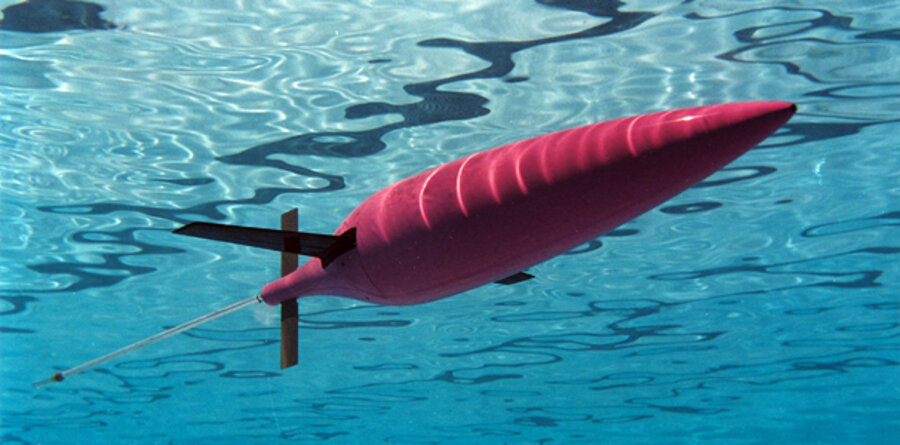No one lives in this submarine
Loading...
Already, autonomous vehicles have driven through urban environments and flown combat missions in Iraq and Afghanistan, but they’ve done little to develop their sea legs. However, last week iRobot Corp. acquired rights to market an unmanned submarine dubbed the Seaglider.
The robotic submersible, developed by researchers at the University of Washington, can dive 3,000 feet and travel for six to seven months, or roughly 2,300 miles, on one battery charge. This endurance comes from its unique propulsion system. Unlike a traditional submarine, the Seaglider does not have a propeller. Instead, the missile-shaped vessel relies on a bladder that deflates causing it to sink while aft-mounted wings move it forward. Once it reaches the dive limit, the bladder reinflates, and the Seaglider creeps upward, again directed forward by its wings.
A conventional submarine, on the other hand, “puts water inside tanks that are on board to make it heavier or it will expel that water to make it lighter,” explains Frederick “Fritz” Stahr, a professor of oceanography at the University of Washington. “[The Seaglider] changes its volume, but it leaves the mass the same.” (In case you’ve forgotten science class, density is determined by dividing an object’s mass by its volume, so changing either variable affects density, and thus whether a submarine sinks or floats.)
Each time the sub surfaces, which happens about 900 times over the course of a typical mission, Seaglider transmits the data it collected during the dive to its controllers via satellite. Operators can also send the sub new information, such as a change of course.
Seagliders are already being used for scientific research, such as environmental and meteorological studies, but iRobot hopes to sell the submarine to the military due to its potential uses for acoustic monitoring. The consumer and military robotics company – which produces everything from the Roomba, for vacuuming living rooms, to the PackBot, for IED removal in Iraq and Afghanistan – hopes to make the Seaglider a key piece of the military’s naval toolkit.
“These things can go out there and monitor large swaths of ocean, because they’re very persistent. They can go for thousands of miles on their own and at the same time you can tell them to stay in one place and they can circle,” says Helen Greiner, chairwoman and cofounder of iRobot in Bedford, Mass. “This is really science fiction stuff in many respects, but it’s really out there and working.”





